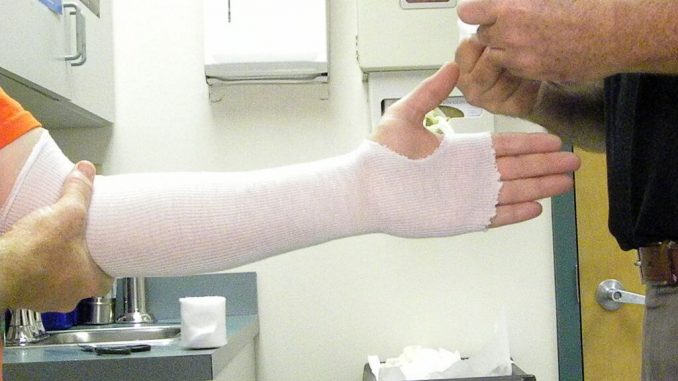
Perhaps no other material is as closely associated to orthopedics as plaster of Paris. And though it is known by many names these days (orthopedic cast, body cast, plaster cast, plaster bandage, surgical cast), its main function of encasing limbs or stabilizing anatomical structures (mostly broken bones) remains the same for centuries.
But how did ancient doctors learn about the benefits of POP to injured limb immobilization? And how it is used by modern physicians in treating fractures today? Learn more about this as we go through the history of plaster in this article.
Definition
Plaster is a type of heavy white powder that turns into a thick paste once mixed with water and hardens when it dries. The powder is a kind of calcium phosphate which is derived from gypsum. Eventually, in the 1700s, it was commonly known as “plaster of Paris” since this powder was extensively mined in Paris particularly, in Montmartre.
History

The mining of POP has been done since ancient times. In fact, traces of plaster have been found inside the pyramids in Egypt, proving that its usage predates the industrial revolution.
Since then, the problem with fractures and the need to immobilize the injured part to alleviate pain and prevent deformity while allowing the patient to move has been a dilemma for physicians. And although other materials like bamboo, wooden sticks, starch, cardboard, and wax were also used, they are not as reliable in holding the reduction. It was in this moment that sculptors and construction workers began using plaster. So surgeons observed the hardening properties of plaster and also started utilizing it to set injured limbs and broken bones.
The earliest recorded use of plaster bandage was around 1000 B.C. when an Arabic doctor invented it as noted in a medical encyclopedia called the “Al-Tasif”. And its medical use was not recognized in the western world just yet. Fast forward to the 1800s, Nikolai Ivanovich Pirogov and Antonius Mathijsen incorporated plaster by rubbing bandages with it and then dampening it with water before applying to the injured limb of the patient. This was the first recorded use of plaster in modern times.
Modern Use
The use of plaster of Paris evolved over time. And today, it is not only used for casting as POP can also act as bone graft substitute during spinal surgeries and fillings for any bone defects. And this is possible since plaster is fluid absorbent and can be easily applied, tucked, pleated, and removed.
And even if modern casting materials such as polyester tape and fiberglass cast tape are also emerging, plaster bandages remains as a material of choice for some surgeons because it is cheaper and has more technical advantages over synthetics.
On the other side, this can also be used by artists to a three-dimensional copy of a human body, also known as Lifecasting.
Final Thoughts
The use of plaster of Paris in immobilizing fractures will endure. It has been our constant companion for fixing limb injuries for centuries. And it will continue to serve its medical purpose for many years to come.

Leave a Reply